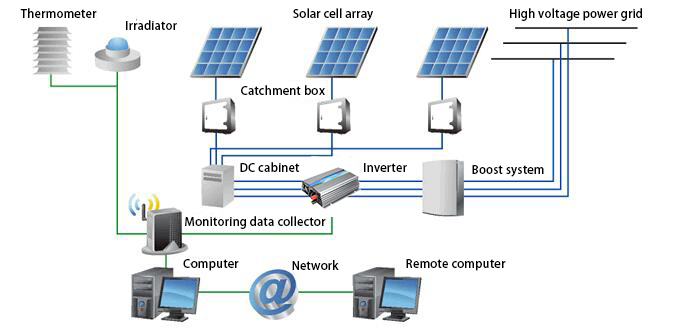Application of On-Grid Inverters in Residential Homes
A grid-tied inverter is a device that converts direct current (DC) produced by solar panels into alternating current (AC) and connects directly to the power grid. With advancements in renewable energy technology, an increasing number of households are opting to install grid-tied inverter systems to reduce electricity bills and lower their carbon footprint. This case study aims to explore the application of grid-tied inverters in residential homes, evaluating their economic and environmental benefits, and sharing users' real experiences. EnterSolar hopes that this study will help you when choosing a grid-connected inverter.

2. Inverter Selection: A 5 kW grid-tied inverter was chosen, paired with 18 monocrystalline solar panels, each with a capacity of 300 watts, totaling 5.4 kW. Monocrystalline solar panels were selected for their high efficiency and long lifespan, making them suitable for residential use.
3. System Configuration and Layout: The solar panels were installed on the south-facing slope of the roof to maximize sunlight absorption. The inverter was installed in the garage for easy maintenance and management.
2. Operating and Maintenance Costs: The system's maintenance costs are low, mainly involving periodic cleaning and inspections, with an annual maintenance cost of about $150.
3. Savings on Electricity Bills and Payback Period: After installation, the monthly electricity bill decreased from $180 to $30, saving about $1,800 annually. The estimated payback period is 6.7 years, after which the family can enjoy at least 15 years of low-cost electricity.
2. Positive Environmental Impact: By reducing dependence on fossil fuels, the system helps alleviate environmental pollution, improving local air quality and the ecological environment.
2. Challenges and Solutions: The main challenge was the high initial investment cost, which was addressed through loans and government subsidies. During installation, roof space limitations were encountered and resolved through a carefully designed optimized layout plan.

Case Background
This case study focuses on a family living in an independent house in San Diego, California, with a floor area of approximately 300 square meters. The household comprises two adults and two children, with an average monthly electricity consumption of about 900 kWh. Given the region's abundant sunlight and high electricity prices, the family decided to install a grid-tied inverter system.
Grid-Tied Inverter Installation and Configuration
1. Installation Process: The installation process included roof assessment, system design, equipment procurement, installation of solar panels and the grid-tied inverter, grid connection, and system commissioning. The entire installation took about two weeks and was carried out by a professional company.2. Inverter Selection: A 5 kW grid-tied inverter was chosen, paired with 18 monocrystalline solar panels, each with a capacity of 300 watts, totaling 5.4 kW. Monocrystalline solar panels were selected for their high efficiency and long lifespan, making them suitable for residential use.
3. System Configuration and Layout: The solar panels were installed on the south-facing slope of the roof to maximize sunlight absorption. The inverter was installed in the garage for easy maintenance and management.
Economic Benefit Analysis
1. Initial Investment Cost: The total investment was approximately $12,000, including equipment procurement, installation fees, and the net cost after tax incentives.2. Operating and Maintenance Costs: The system's maintenance costs are low, mainly involving periodic cleaning and inspections, with an annual maintenance cost of about $150.
3. Savings on Electricity Bills and Payback Period: After installation, the monthly electricity bill decreased from $180 to $30, saving about $1,800 annually. The estimated payback period is 6.7 years, after which the family can enjoy at least 15 years of low-cost electricity.
Environmental Benefit Analysis
1. Carbon Emission Reduction: The system can reduce carbon dioxide emissions by approximately 5.5 tons annually, equivalent to planting 165 trees.2. Positive Environmental Impact: By reducing dependence on fossil fuels, the system helps alleviate environmental pollution, improving local air quality and the ecological environment.
User Feedback and Experience
1. Usage Experience: The family is very satisfied with the performance of the grid-tied inverter system, especially the significant reduction in electricity bills and environmental benefits. The system operates stably with minimal intervention needed.2. Challenges and Solutions: The main challenge was the high initial investment cost, which was addressed through loans and government subsidies. During installation, roof space limitations were encountered and resolved through a carefully designed optimized layout plan.

